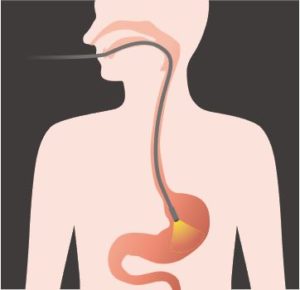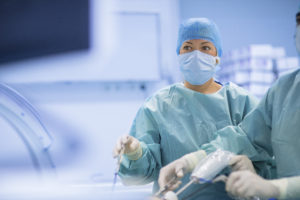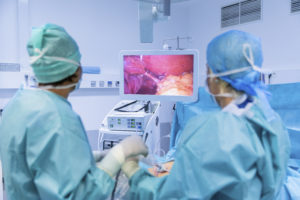Advancements in Computer Technology and Expert Design Improve Gastrointestinal Patient Care

Advancements in computer technology allow for advanced medical devices. Better image processing and capabilities beyond our past experience are now available with gastrointestinal endoscopy procedures. Screening surveillance, autofluorescence mode for diagnostic or treatment guidance and multifunctional endoscope with multiple imaging technologies are some of the emerging medical device technology areas that will provide better patient diagnosis and treatment that will inevitably save lives.
Per Shawn Tsuda article on the Society of American Gastrointestinal and Endoscopic Surgeons (SAGES), new endoscopic technology as the application of endoscopes expands. He stated, “From intralumenal to translumenal therapy, shape locking devices or guided endoscopes could be used for stabilization of the translumenal operative field. High resolution and magnifying scopes could enhance the optics of an operative field, and other advanced imaging technology could be applied to solid organs for detecting neoplastic lesions. Scopes specifically designed for translumenal endoscopic surgery are likely to be developed. Thus, as the technology expands, so too will the applications of advanced endoscopic therapy.”
A Shift in Endoscopy Trend: From Diagnostic to Interventional Treatment
The shift in recent endoscopy trend is mainly the shift from the procedure being purely diagnostic in nature to a combination of diagnostic and interventional treatment. The endoscopic instrument is now smaller, more flexible and better controlled with better visual imagery of the areas. The computer used to control the process is faster, with better graphical and communications capabilities. The more advanced the technology, the less invasive the treatment for gastrointestinal issues that might have involved surgical procedures in the past. The rise of video laparoscopes in the early 80s allowed for further technology advancement beyond the confinement of gastrointestinal tracts. Natural Orifice Translumenal Endoscopic Surgery (NOTES) help both patients and doctors avoid invasive surgical procedures that require incisions through skin, muscles, nerves and more. Patient’s recovery time is shorter and the postoperative risks, i.e., infections or other complications are much less than those of the traditional surgical procedures.
The Role of Industrial Computer in Endoscopy Technology
 Today, using a more advanced endoscope and computer, a doctor can examine a patient’s gastrointestinal tract and perform steps to further diagnose or treat the issues with more accuracy using a minimally invasive procedure. The doctor can rely on images transmitted by the endoscope to find, i.e., lesion, abnormal tissues – and perform a biopsy as well as deliver localized treatments on the spot.
Today, using a more advanced endoscope and computer, a doctor can examine a patient’s gastrointestinal tract and perform steps to further diagnose or treat the issues with more accuracy using a minimally invasive procedure. The doctor can rely on images transmitted by the endoscope to find, i.e., lesion, abnormal tissues – and perform a biopsy as well as deliver localized treatments on the spot.
The trends involved in medical endoscopy have moved toward higher image resolution, image capture and storage, image processing and patient information management. These features require powerful medical computers that can handle a high volume of data and images at high processing speeds. Images are usually transmitted in real time, but image enhancement, the display of stored images and the display of patient information as required must be quick and complete. Ideally, image display and processing must occur as quickly as looking through the pages of a file containing images on paper.
As the volume of data and images processed and stored increases, system requirements are testing the limits of computer performance. The design of fast, powerful embedded motherboards or systems becomes critical for further progress in patient care quality.
Image Display and Processing
In the past, doctors used eyepieces to view the images collected by older endoscopes. Today such images are displayed on a computer screen, and the display resolution is critical for accurate diagnosis and treatment. Once a high-resolution image is displayed in natural colors, the doctor may be able to gain additional insights by applying magnification and filters that change the colors, sharpen details or emphasize outlines. Such image processing has to be simple to request via a user-friendly interface and quick to apply. Medical computers with powerful graphics capability are required to carry out such processing.
Image Capture
 A key development for improved patient care is the ability to store images during diagnosis and treatment. When an appropriate number of images showing problem areas are stored digitally during an examination, they can be called up on the screen as required during subsequent follow-ups or during additional treatment. When a doctor sees an image or has a processed image that might be of interest later, he can use the endoscope control system to capture the image and store it in the patient file. The system’s communication capabilities for data transfer via Ethernet ports or Wi-Fi, secured access and interoperability with patient’s data software are required.
A key development for improved patient care is the ability to store images during diagnosis and treatment. When an appropriate number of images showing problem areas are stored digitally during an examination, they can be called up on the screen as required during subsequent follow-ups or during additional treatment. When a doctor sees an image or has a processed image that might be of interest later, he can use the endoscope control system to capture the image and store it in the patient file. The system’s communication capabilities for data transfer via Ethernet ports or Wi-Fi, secured access and interoperability with patient’s data software are required.
Information Management
The stored images are only one aspect of patient information management. Doctors and other medical professionals can take notes and attach them to specific images or keep them in a separate report. Test results and the details of procedures the patient undergoes can also be stored. Additional records from other health facilities and medical appointment histories, other patient conditions, and additional relevant information are all part of the information management system.
Information management for gastrointestinal patients requires powerful embedded systems or device with advanced motherboards with a powerful processor and graphical capabilities because of the high image component. New wireless capsule endoscopes that patients swallow can generate thousands of images. Such images are evaluated by trained specialists and images of interest have to be annotated and stored. Storing large numbers of images or images with very high resolution and retrieving them quickly when needed – at a minimum – requires computers with fast processing speed and large storage capacity.
Ideally, a doctor can call up such recorded images during a patient visit, while conducting examinations and while providing treatment. The doctor may want to see the same area and how it developed over several months, or he may see something suspicious and examine previous images. On the other hand, he may capture images from a particular area with the intention of following up over the next several visits. He can also view test results, patient histories and any future planned interventions. Powerful computers and embedded motherboards from Axiomtek along with the company’s design expertise can deliver the processing power and configurations that make these scenarios possible.
Axiomtek Products and Support
Axiomtek specializes in designing and manufacturing of industrial computers, embedded motherboards and panel PCs including medical-grade, certified touch panel PCs. The company is known to provide customized and personalized design support to help systems integrators and medical device manufactures with their medical device projects.
Axiomtek’s products are manufactured in ISO 13485, ISO 9001 and ISO 14001 facilities. They are robust, highly reliable and customizable. The products are feature-rich and highly expandable, with extensive connectivity. Its medical-grade touch panel PCs are UL60601-1/EN60601-1, CE and FCC Class B certified to meet the stringent requirements of the industry.
Axiomtek offers design and implementation support and has extensive experience supporting medical device integrators and medical equipment manufacturers for more than 25 years. From OEM/ODM services that range from support services during the design, integration, testing and/or deployment stages to value-added and post manufacturing support services, Axiomtek offers true customer value and allows its customers to focus on their core competency without draining their valuable resources.
For assistance and more information, write to medicalsolutions@axiomtek.com, call 1-888-GO-AXIOM (1-888-462-9466), or visit the website at axiomtek-medical.com.

